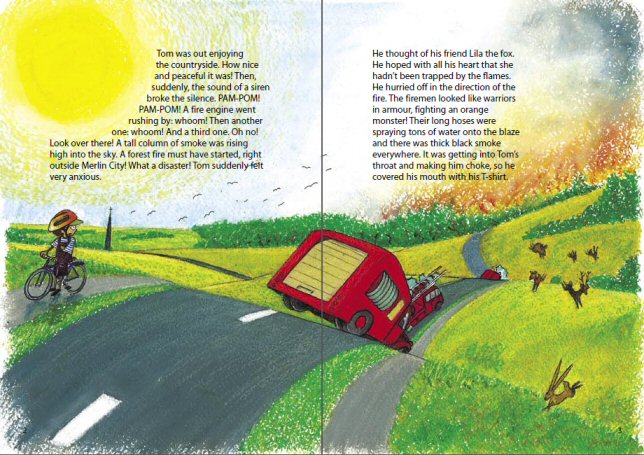In my previous post, I discussed the challenges of reducing non-CO2 greenhouse gas (GHG) emissions from agriculture and identified some of the strategies that are available or under development to allow farmers to reduce these emissions. But by how much would these strategies reduce projected emissions? What is the potential magnitude of the emissions reduction we should expect from agriculture in the coming decade? As in the previous post, I deliberately exclude a discussion of the potential to offset these emissions through land management and land use change although, as we will see, some insights into the potential to reduce emissions in the LULUCF sector will be covered in this post.… Read the rest
Measuring food system emissions
A paper just published in Nature Food by researchers from the EU Joint Research Centre (JRC) and FAO has for the first time provided a consistent database of food system greenhouse gas (GHG) emissions globally and for every country with yearly frequency for the period 1990-2015. The authors justifiably claim that it represents a milestone in our understanding of how the global food system has developed. This post looks at some of the main messages provided by the paper.
It is first important to understand what the data are measuring. Although they cover food system emissions, these data are not consumption-based food system emission estimates or footprints.… Read the rest
Role of the land sector in meeting EU’s climate targets
The EU has signed up to the 17 UN Sustainable Development Goals to be achieved by 2030. Among these are Goal 13 to take urgent action to combat climate change and its impacts and Goal 15 to protect, restore and promote sustainable use of terrestrial ecosystems, sustainably manage forests, combat desertification, and halt and reverse land degradation and halt biodiversity loss.
The incoming Commission President-elect Ursula von der Leyen set out in her Political Guidelines for the new Commission her ambition that the EU should raise its commitment to reduce greenhouse gases (GHGs) in 2030 from 40% to 50% immediately and to 55% in the first half of the next decade compared to 1990.… Read the rest
Long-run perspective on EU agricultural output growth and GHG emissions
The extent to which agricultural growth can take place while at the same time reducing agricultural greenhouse gas (GHG) emissions is much debated. There is a widespread view, reflected in the agricultural mitigation chapter of the IPCC’s Fifth Assessment Report in 2014, that changes in food consumption patterns will be necessary if GHG emissions from global agricultural production are to fall sufficiently to help to stabilise the climate by 2050. The diet changes proposed, including a shift away from meat and dairy product consumption, would deliver emissions reductions by reducing agricultural production. Others point instead to the potential of technological advances to reconcile increased agricultural output with lower emissions, effectively allowing the decoupling of emissions growth from agricultural growth.… Read the rest
The GHG emissions challenge for agriculture
Agricultural greenhouse gas (GHG) emissions in the EU-28 have flat-lined since 2005 (see chart below). They fell slightly between 2005 and 2012 and have been increasing since then. In 2016, the agricultural sector was responsible for 430 million tonnes of GHG emissions in CO2 equivalents (CO2eq) compared to 434 million tonnes in 2005. This relative stability is due, I suspect, to a slow improvement in emissions intensity per unit of output offset by increased levels of output. The increase since 2012 is likely mainly associated with the removal of dairy quotas in 2015 which has allowed an expansion in the dairy herd in some countries, though these speculative hypotheses should be subject to more rigorous analysis.… Read the rest
Greenhouse gas emission targets and Irish agriculture
Ireland faces a huge challenge in reducing its greenhouse gas emissions in the coming years. Taoiseach (Irish Prime Minister) Enda Kenny got into hot water last week for apparently saying one thing in his official speech to the Paris COP21 climate conference and another thing in unscripted remarks to journalists afterwards. Much of the subsequent controversy during the week revolved around the Irish government’s attitude to agricultural emissions and whether it was seeking special favours for the Irish agricultural sector in the current negotiations on setting national emissions targets for the period to 2030 in the framework of the EU’s 2030 Climate and Energy Package.… Read the rest
Including LULUCF in the EU’s 2030 climate policy target
Today, Thursday 18 June, is the closing date for the Commission’s consultation on addressing greenhouse gas emissions from agriculture and land use, land use change and forestry (LULUCF) in the context of the 2030 EU climate and energy framework. The consultation will be followed by a Commission proposal in the course of next year (2016). This proposal will be a very significant initiative, and will have large implications for land use within the EU, as well as determining the severity of member state mitigation targets under the Effort Sharing Decision (ESD) to 2030.
Background
In 2012, agricultural non-CO2 emissions amounted to 10.3% of total emissions in the EU.… Read the rest
Agriculture in the Commission’s climate policy to 2030
Yesterday, the European Commission published its proposed policy framework for climate and energy policy to 2030. It proposes two high-level goals while retreating from setting more specific targets for individual sectors and technologies. The over-arching goal is a greenhouse gas emissions reduction target for domestic EU emissions of 40% in 2030 relative to emissions in 1990. The proposal met with a mixed reaction and must still go through the legislative process in both the Parliament and the Council.
The Commission’s assessment is that the policies and measures implemented and envisaged by member states in relation to their current obligations to reduce greenhouse gas emissions, if continued after 2020 and fully effective, would deliver a 32% reduction relative to emissions in 1990.… Read the rest






